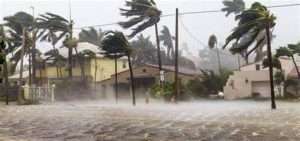Items That Are Not Included in a
Standard Home Inspection
A home inspection is an essential step in the process of buying or selling a property. It helps identify potential issues that may affect the safety, integrity, or functionality of the house. However, it is important to note that there are certain items that are not typically included in a standard home inspection. These items may require specialized inspections or evaluations to ensure their proper functioning and condition.
Items That Are Not Included in a Standard Home Inspection
1. Cosmetic Issues: The primary focus of a standard home inspection is to assess the structural and safety-related components of the property. Therefore, cosmetic concerns such as paint colors, wallpaper choices, or minor scuffs and scratches on walls are generally not within the inspector’s scope.
2. Environmental Hazards: Home inspectors primarily focus on the visible aspects of the property. They may not test for environmental hazards like asbestos, radon, lead-based paint, or mold. Addressing these concerns often requires separate inspections by specialists in each respective area.
3. Pest Inspections: Detecting pests such as termites, rodents, or other insects may not be part of the standard home inspection. If you suspect pest issues, it’s advisable to hire a pest control professional who specializes in this type of assessment.
4. Swimming Pools and Spas: If the property includes a swimming pool, spa, or other water features, the inspector may not evaluate them unless you specifically request and pay for an additional inspection.
5. Septic Systems: Home inspectors generally do not inspect septic systems. If the property relies on a septic system, you’ll likely need to hire a specialist for a dedicated septic inspection.
6. Well Water Quality: Water quality testing for well water is typically not included in a standard inspection. To ensure the safety of your well water, you’ll need to arrange a separate water quality test.
7. Code Compliance: Home inspectors do not assess whether the property complies with current building codes. Their focus is on evaluating the condition of existing components rather than assessing whether they meet the latest legal requirements.
8. Appliances: While inspectors may check the general condition and operation of major appliances like the furnace, water heater, and electrical panel, they do not perform a detailed examination of every appliance. If you have concerns about specific appliances, consider a separate appliance inspection.
9. Underground Systems: Inspectors generally do not assess underground utilities, such as sewer lines, buried oil tanks, or underground electrical wiring. These aspects may require specialized inspections by experts in those fields.
10. Future Issues: Home inspectors cannot predict future problems or conditions that may arise after the inspection. They evaluate the property’s condition at the time of the inspection only.
Remember that the scope of a home inspection can vary, so it’s essential to review the inspection agreement and discuss any specific concerns with your inspector. If you have additional questions or want certain areas inspected that are not included in the standard inspection, you may need to hire specialists or request additional services to address those specific concerns.
Conclusion
While a standard home inspection is an important step in the home-buying process, it is essential to be aware of its limitations. Certain items, such as swimming pools, septic systems, environmental hazards, and in-depth HVAC systems, require specialized inspections. Investing in these additional inspections ensures a comprehensive property evaluation and helps you make informed decisions regarding any necessary repairs or maintenance. By understanding what a standard home inspection covers and what it does not, you can better navigate the home-buying process and protect your investment.





